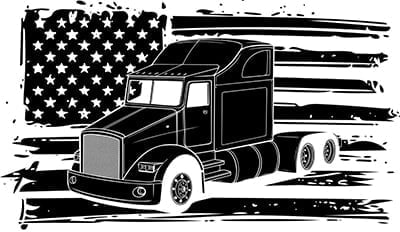How To Pass The CDL Air Brake Test
A Commercial Driving License with an air brake restriction is like bread without butter; it’s just plain and limited. Even if you do find a commercial driving job, you will be limited to operating trucks, buses and trailers without air brake systems. However, if you do pass the CDL air brake test, it will be much easier for you to drive any commercial vehicle; with or without an air brake system. You may even bargain for a better salary without an air brake restriction. But let’s not cross the bridge before we get there. Instead, let’s have a look at what you need to do to pass the CDL air brake test.
Learn all the Crucial Parts of an Air Brake System
 For you to pass both the written and practical air brake tests, you should be able to identify the basic components of the air brake systems. Typically, the air brakes consist of three parts which include: parking brake, service brake, and emergency brake.
For you to pass both the written and practical air brake tests, you should be able to identify the basic components of the air brake systems. Typically, the air brakes consist of three parts which include: parking brake, service brake, and emergency brake.
Further, the three parts which make up the air brake system contain other components namely: air compressor, air storage tanks, air compressor governor, brake drums, spring brakes, trailer protection valve, parking brake controls, foundation brakes, air tank drains, brake pedal, alcohol evaporator, supply pressure gauges, safety valve, application pressure gauge, front brake limiting valve, stop light switch and low air pressure warning alert. Mind you, different vehicles may have different components that are part of the air brake system.
The bottom line: You should memorize all the crucial parts of an air brake system relevant to your classification. Sure, it’s a little bit complex but you can use a diagram to help you out. Don’t forget to consult your state’s CDL manual and vehicle’s manual.
Understand Dual Air Brake Systems
Alternatively, some new vehicles are equipped with a dual air brake system. As the name suggests, the dual system involves two distinct air brakes that are run by the same controls. Usually, the primary system activates the rear axle brakes while the secondary system controls the front axle brakes.
If you don’t encounter the regular air brake system, you can bet the dual air brake system will be part of your curriculum. Maybe it could be both. Whichever the scenario, it won’t hurt to expand your knowledge.
Know How To Inspect The Air Brake System
During the practical test, you will be required to demonstrate to the examiner that you can inspect the air brake system. In general, you will be checking for signs of wear or any broken air brake system component that needs to be fixed or repaired. Some of the crucial parts that you ought to inspect include the air compressor belt, slack adjusters, low-pressure warning signal, spring rate actuation, parking brake, air pressure build-up rate, brake drum lining, air leakage rate, spring rate actuation, and governor cut-in and cut-out level.
Afterward, you will need to do an air brake check through a series of tests to diagnose any problems. The most common methods used to perform an air brake check include the pump down test and the pump up test. Whatever you do, just make sure you can do a competent air brake check before the CDL air brake test, or otherwise, you will lose some marks.
Beware: Don’t inspect the hood when the engine is running.
Learn How To Operate The Air Brakes
Finally, everything will come down to whether or not you can operate the air brakes. Apparently, pushing the brake pedal down to stop is the easiest air brake maneuver. The real challenge is performing an emergency stop which can either be done through controlled braking or stab braking. The controlled braking method is successfully done by applying the brakes using your full force without locking the wheels. On the other hand, stab braking is more intricate; you need to press the brakes until the wheels lock up then wait for the wheels to start rolling again to apply the brakes a second time. See, it isn’t that hard but it needs a lot of practice to perfect.
Some vehicles have Anti-lock Braking Systems (ABS) to improve control during hard braking. To confirm if your vehicle has ABS, watch out for a yellow ABS warning light that appears on the dashboard.
Also, remember that you’re not driving a regular car and usually trucks, trailers and buses with air brakes have a longer stopping distance due to the added delay. In case the low air pressure warning is activated, it means there could be a leak somewhere and you should stop and park as soon as possible. Of course, always engage the parking brakes whenever you’re parking except when the brakes are too hot or they’ve frozen.
The secret to passing the CDL practical air brake test is to practice until you can almost do it with your eyes closed. Similarly, you can do a few practice tests online to help you ace the written knowledge test. Well, it’s not a secret anymore!
